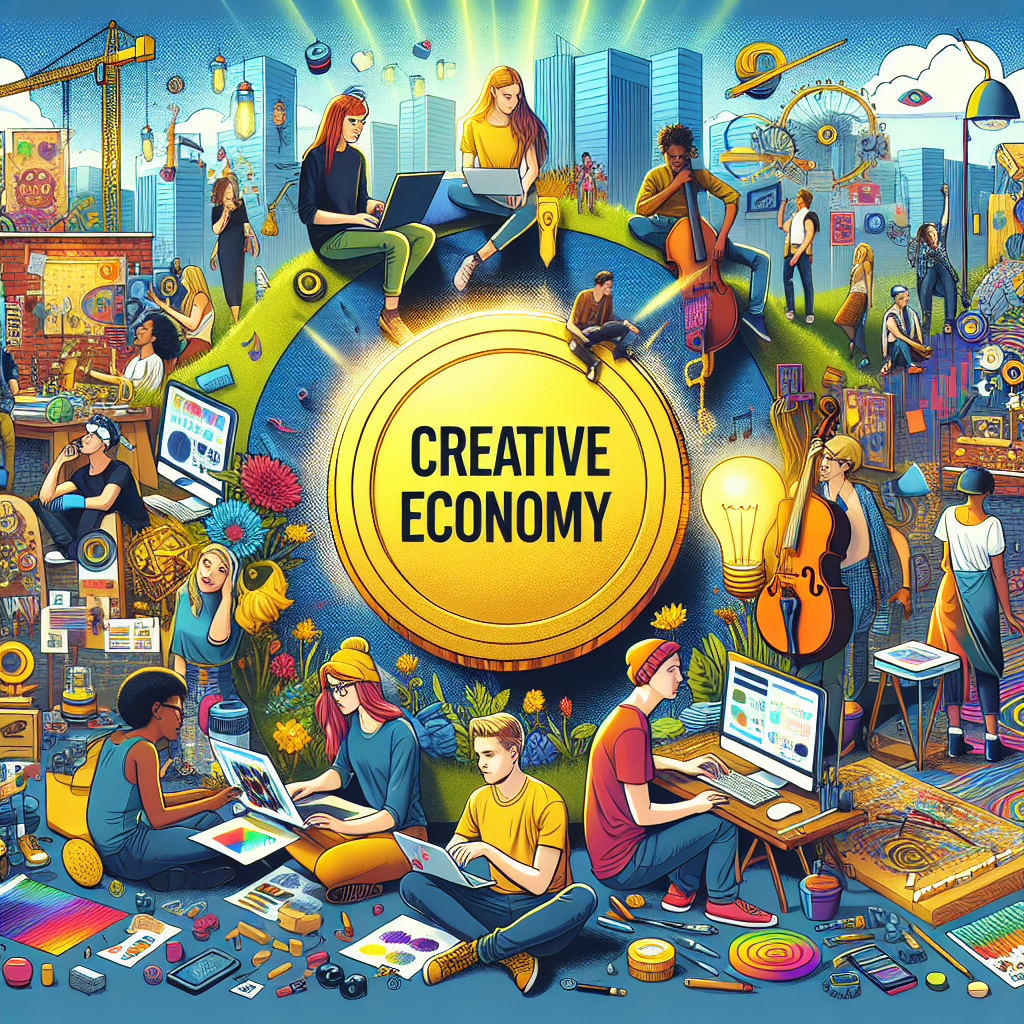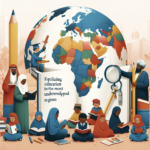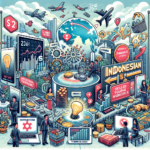-
Table of Contents
- Introduction
- The Creative Economy in Indonesia
- Defining the Creative Economy
- The Growth of the Creative Economy in Indonesia
- Government Support and Initiatives
- Opportunities for the Younger Generation
- Job Creation and Entrepreneurship
- Global Market Access
- Cultural Preservation and Innovation
- Challenges Faced by the Younger Generation
- Limited Access to Funding
- Lack of Infrastructure and Resources
- Intellectual Property Protection
- Conclusion
Introduction

The creative economy, or “ekonomi kreatif” in Indonesian, has emerged as a new source of income and opportunity for the younger generation in Indonesia. With its diverse cultural heritage and vibrant artistic scene, Indonesia is well-positioned to tap into the potential of the creative economy. This article will explore the various sectors within the creative economy, the opportunities it presents for young people, and the challenges they may face in this dynamic industry.
The Creative Economy in Indonesia
Defining the Creative Economy
The creative economy encompasses a wide range of sectors that are based on creativity, knowledge, and intellectual property. These sectors include visual arts, performing arts, design, fashion, film, music, architecture, advertising, and more. The creative economy is not limited to traditional artistic fields but also includes technology-driven sectors such as software development, video game design, and digital media.
The Growth of the Creative Economy in Indonesia
In recent years, the creative economy has experienced significant growth in Indonesia. According to data from the Central Statistics Agency (BPS), the creative economy contributed 7.44% to Indonesia’s GDP in 2019, amounting to IDR 1,129.1 trillion (approximately USD 79.6 billion). This growth is driven by the increasing demand for creative products and services both domestically and internationally.
Government Support and Initiatives
Recognizing the potential of the creative economy, the Indonesian government has implemented various initiatives to support its development. The Ministry of Tourism and Creative Economy was established in 2011 to oversee and promote the creative economy sector. The government has also launched programs such as the Creative Economy Agency (BEKRAF) and the Creative Economy Masterplan to provide funding, training, and infrastructure support to creative entrepreneurs.
Opportunities for the Younger Generation
Job Creation and Entrepreneurship
The creative economy offers numerous opportunities for young people to create their own jobs and become entrepreneurs. With the rise of digital platforms and social media, individuals can showcase their creative talents and reach a global audience. Young artists, designers, musicians, and content creators can monetize their skills through online marketplaces, freelance work, or by starting their own creative businesses.
Global Market Access
The internet has opened up new avenues for young Indonesian creatives to access global markets. Through e-commerce platforms and online marketplaces, artists and designers can sell their products and services to customers worldwide. This global reach allows young entrepreneurs to tap into a larger customer base and increase their earning potential.
Cultural Preservation and Innovation
The creative economy also plays a crucial role in preserving Indonesia’s rich cultural heritage. Traditional arts and crafts, such as batik, woodcarving, and traditional music, are being revitalized and given a contemporary twist by young artists and designers. This fusion of tradition and innovation not only preserves cultural identity but also creates unique and marketable products that appeal to both domestic and international consumers.
Challenges Faced by the Younger Generation
Limited Access to Funding
One of the main challenges faced by young creatives in Indonesia is the limited access to funding. Many young entrepreneurs struggle to secure capital to start or expand their creative businesses. While the government has introduced funding programs, the application process can be complex, and the competition for grants and loans is high. This lack of financial support hinders the growth and sustainability of creative ventures.
Lack of Infrastructure and Resources
Another challenge is the lack of infrastructure and resources specifically tailored to the needs of the creative economy. Access to affordable studio spaces, equipment, and technology is essential for young artists and designers to develop their skills and produce high-quality work. Additionally, the absence of specialized training programs and mentorship opportunities limits the professional growth and competitiveness of young creatives.
Intellectual Property Protection
Intellectual property protection is a significant concern for young creatives in Indonesia. Copyright infringement and piracy are prevalent issues that can undermine the economic viability of creative businesses. Without adequate protection, young artists and designers may hesitate to invest their time and resources in developing innovative ideas, fearing that their work will be stolen or copied without proper compensation.
Conclusion
The creative economy presents a promising avenue for the younger generation in Indonesia to explore their talents, create new jobs, and contribute to economic growth. With the government’s support and initiatives, young creatives have access to funding and training programs to kickstart their entrepreneurial journey. However, challenges such as limited funding, lack of infrastructure, and intellectual property protection need to be addressed to ensure the sustainable growth of the creative economy. By overcoming these challenges, Indonesia can harness the full potential of its creative industries and empower the younger generation to thrive in the ekonomi kreatif.




